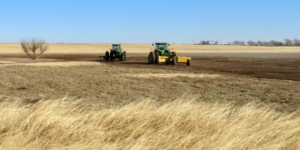Program Fills Pits and Trenches in Grassland Playas at No Cost to Landowners
A new multi-partner playa restoration program, the Texas Playa Conservation Initiative, is offering participating landowners free backfilling of pits and trenches in playas surrounded by grass. Backfilling these pits and …

